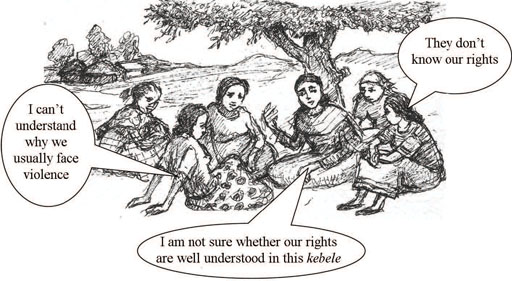
Gender-based violence (GBV) is any form of deliberate physical, psychological or sexual harm, or threat of harm, directed against a person on the basis of their gender.

Although gender-based violence is not exclusively directed against females, they do suffer from it the most, which is why the focus of this study session is on women and girls (see Figure 6.2). GBV is a violation of fundamental human rights. Violence against girls and women prevents them from enjoying their rights, such as those shown in Box 6. 1.
When violence occurs against girls and women, it is usually committed by boys or men. Violence against women stems from the unequal power relations between men and women. A person with more power has many choices, while a person with less power has few choices. There are many types of power, such as economic power (control or access to money and other resources) and physical power (strength or weapons). The person with less power is vulnerable in many ways. Women have less power than men and as a consequence are more vulnerable to violence (see Figure 6.3).

The most common form of violence is the violence against girls and women at the household level. In most communities in Ethiopia, this GBV is accepted as normal behaviour and there is little awareness of GBV as an issue that needs attention. It is not treated as a serious crime but as a private matter even though it has serious consequences for girls and women.
Violence against women and girls takes place throughout their lives, starting in infancy and continuing to old age. Examples include the preference for a male child, trafficking for labour and sexual abuse, rape, wife beating, food restriction, early marriage, marriage to a man who already has a wife, abduction, female genital mutilation and wife inheritance.
There are various factors that make girls and women vulnerable to acts of violence, such as:
Stop reading for a moment and think about this from your own experience.
What sort of violence against girls and women happens in your community?